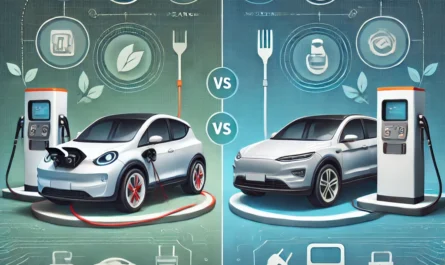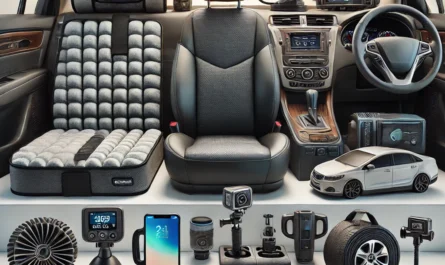Choosing the right car variant can be a complex decision, with each variant offering different combinations of features, performance, and pricing. Automakers typically offer several trims or versions of a car model to cater to a wide range of buyers. Knowing how to select the best variant for your needs requires careful consideration of what features matter most to you and your budget.
This guide will help you understand the key features to look for when picking a car variant and how to evaluate which options provide the best value for your lifestyle. Whether you’re prioritizing performance, safety, technology, or budget, making an informed decision will ensure you get the most out of your purchase.
Understanding Car Variants and Trims
Car variants (also known as trims or models) are different versions of the same car, each offering varying levels of features, performance upgrades, and sometimes even design elements. Automakers often present these variants as packages, with entry-level trims providing the basics and higher-end trims offering additional luxury or technology features.
Each variant is designed to meet different consumer needs:
- Base Model: Typically the most affordable option, offering essential features without many extras. Ideal for budget-conscious buyers who need a functional vehicle.
- Mid-Level Trim: Offers a balance of features, performance, and price. These trims often include some advanced features found in higher-end models but at a more accessible price point.
- Top-End Trim: The premium version of a model, fully loaded with the latest technology, safety features, and luxury options. These variants are the most expensive but offer a high level of comfort and performance.
Understanding which variant best suits your needs involves evaluating the features that matter most and balancing them with your budget.
How to Pick the Right Car Variant
When choosing a car variant, several factors should influence your decision. These include your budget, driving habits, lifestyle needs, and the features that matter most to you. Here’s a step-by-step guide to help you make the right choice.
1. Assess Your Budget
The first and most important factor in choosing a car variant is your budget. Higher-end variants come with more features, but they also come with a higher price tag. Decide how much you’re willing to spend and determine whether you’re paying outright or financing. Your monthly payment, fuel, insurance, and maintenance should also be factored into your budget.
If your budget is limited, it may be wise to stick to a mid-level or base variant. These options still offer plenty of features without the premium cost of a fully loaded model.
2. Determine Your Driving Needs
Your driving habits and needs will heavily influence which variant is best for you. Consider these questions:
- City Driving vs. Long Distances: If most of your driving is in the city, a base or mid-level variant with good fuel efficiency and easy maneuverability might be ideal. If you frequently take long trips, a variant with comfort features like cruise control, enhanced infotainment, and safety upgrades could be more beneficial.
- Performance Requirements: Some car variants offer better engine performance, suspension systems, or handling features. If you value acceleration, handling, or towing capacity, look for higher-performance variants with more powerful engines and enhanced suspension systems.
- Climate and Terrain: If you live in an area with harsh winters or rough terrain, look for a variant with all-wheel drive (AWD) or four-wheel drive (4WD) capabilities, as well as features like heated seats or advanced climate control.
3. Focus on Essential Features
The features offered by different variants can be overwhelming, but it’s essential to focus on those that are most relevant to your lifestyle and driving habits. Here are some key feature categories to consider:
- Safety Features: Modern cars come with a variety of safety features, many of which are standard on mid-range and top-end variants. Look for advanced driver-assistance systems (ADAS) like lane-keeping assist, automatic emergency braking, adaptive cruise control, and blind-spot monitoring. These features can help prevent accidents and enhance your overall driving experience.
- Comfort and Convenience: Interior comfort can make a significant difference, especially on long drives. Premium materials, heated seats, automatic climate control, and ample legroom are some of the features to look for in mid-level and higher trims. If you value a more luxurious feel, leather seats and power-adjustable seating may be worth the investment.
- Technology and Infotainment: Mid-range and top-level variants often offer the latest in connectivity and infotainment systems, including touchscreen displays, smartphone integration (Apple CarPlay and Android Auto), premium sound systems, and navigation. If you frequently use your car for work or entertainment, these tech features can be a big draw.
- Fuel Efficiency: Some variants may offer better fuel efficiency due to hybrid or more efficient engine options. If saving on fuel is a priority, look for variants that include fuel-saving technology or hybrid options.
- Cargo Space and Seating: Families and travelers may prioritize variants that offer more cargo space, rear seat folding, and additional seating capacity. Some top-end variants of SUVs and minivans come with power liftgates, third-row seating, and other conveniences for larger families.
4. Consider Long-Term Value
While it’s tempting to focus on the flashy features of a higher-end variant, it’s important to consider the long-term value. Does the variant offer good resale value? Is the brand known for durability and low maintenance costs? Mid-level variants often strike the best balance between offering premium features and maintaining long-term value.
5. Test Drive Multiple Variants
Once you’ve narrowed down your options, test drive the different variants you’re considering. A test drive will give you a feel for how the car handles, whether the performance meets your expectations, and whether the interior comfort and technology are worth the added cost.
During the test drive, pay attention to:
- Handling and Performance: Does the car accelerate smoothly? How does it handle on different types of roads?
- Interior Space and Comfort: Is the seating comfortable? Does the car offer enough legroom and headroom?
- Technology Usability: Are the infotainment and safety features easy to use, or do they feel overwhelming or unnecessary?
6. Evaluate the Cost of Ownership
Beyond the initial purchase price, consider the overall cost of ownership for the variant you choose. This includes insurance, fuel, taxes, and maintenance costs. For example, higher-end variants with more powerful engines may be more expensive to insure and fuel. It’s also important to factor in potential repair costs and the availability of spare parts for specific models.
Brands with a reputation for reliability, such as Toyota, Honda, and Subaru, typically offer variants with lower long-term ownership costs. Researching the model’s reliability ratings can help you avoid costly repairs down the line.
You can also read: A Complete Guide to Understanding Car Trims and Variant
Key Features to Consider When Choosing a Car Variant
To help guide your decision, here’s a breakdown of some of the most important features to consider when comparing car variants:
- Engine Power and Performance: If you prioritize speed, towing, or off-road capabilities, look for variants with more powerful engines. Performance trims often include turbocharged engines, sport-tuned suspensions, or AWD/4WD options.
- Safety Features: Look for cars with a high safety rating and features like forward-collision warning, lane-departure warning, rearview cameras, and adaptive cruise control. Some of these features are often available only in mid-level and top-end variants.
- Fuel Efficiency: Consider hybrid or eco-friendly variants if fuel savings are important to you. Many mid-level and higher trims offer fuel-saving technology or hybrid engines for better gas mileage.
- Infotainment and Connectivity: Evaluate the car’s technology features, such as touchscreens, smartphone integration, Bluetooth connectivity, and GPS navigation. Higher-end variants typically have larger screens and more connectivity options.
- Comfort and Convenience: Features like leather seats, heated/ventilated seats, keyless entry, and dual-zone climate control are often found in mid- and top-level variants. These can make a difference in your daily driving comfort.
- Storage and Cargo Space: If you need extra space for luggage, equipment, or groceries, look for variants with foldable rear seats, larger trunks, or additional storage compartments.



